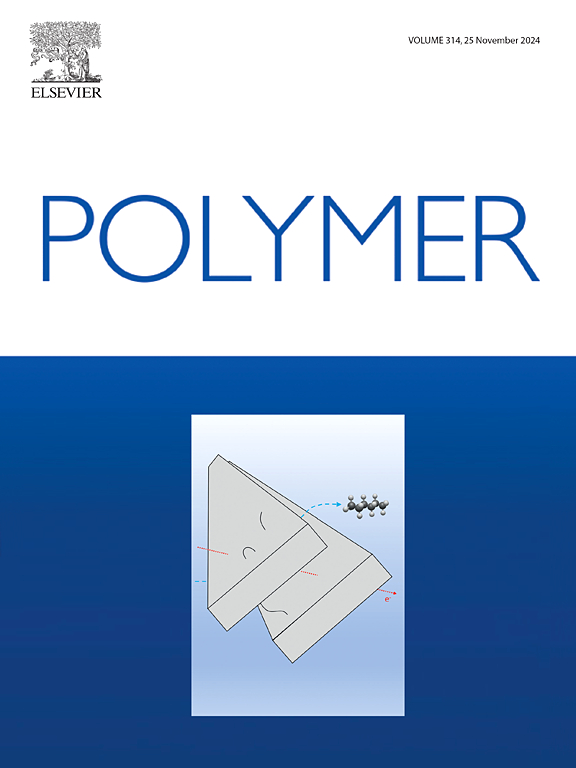Moving Beyond Organosilanes: Tris(hydroxymethyl)aminomethane as a Superior Surface Modifier for Zirconia in NBR Composites
IF 4.1
2区 化学
Q2 POLYMER SCIENCE
引用次数: 0
Abstract
This study investigates the potential of Tris(hydroxymethyl)aminomethane (Tris) as a surface modifier for zirconia to enrich the ultimate properties of nitrile rubber (NBR) composites. By substituting commonly used organosilanes with Tris to modify the surface of zirconia, significant improvement in zirconia particle dispersion within the NBR matrix is achieved, leading to a stronger rubber-filler interaction. Scanning electron microscopy (SEM) images reveal a finer dispersion of zirconia particles, facilitated by the efficient surface modification of zirconia by Tris. Rubber-filler interactions, examined through the Lorenz-Park principles and viscoelastic properties, demonstrate that Tris modification reduces the surface energy of zirconia, enhancing its dispersibility and improving interfacial bonding between the rubber and the zirconia due to increased reactivity. This causes significant improvement in mechanical and other composite properties such as thermal stability, oil resistance, flame retardancy for the Tris modified in situ zirconia filled composites. Among the compositions examined, the composite containing 2 phr of Tris and 30 phr of zirconia (In-2T-Zr-30) exhibits a substantial improvement in tensile strength, over 20 times higher than that of the unfilled sample. These findings highlight the potential of Tris as an effective surface modifier for zirconia, enhancing filler performance and offering a promising alternative to organosilanes in the development of high-performance nitrile rubber composites

本研究探讨了三(羟甲基)氨基甲烷(Tris)作为氧化锆表面改性剂的潜力,以丰富丁腈橡胶(NBR)复合材料的最终性能。用 Tris 替代常用的有机硅烷来改性氧化锆表面,可显著改善氧化锆颗粒在丁腈橡胶基体中的分散性,从而增强橡胶与填料之间的相互作用。扫描电子显微镜(SEM)图像显示,由于 Tris 对氧化锆进行了有效的表面改性,氧化锆颗粒的分散更加细腻。通过洛伦兹-帕克原理和粘弹性能对橡胶与填料的相互作用进行了研究,结果表明,Tris 改性降低了氧化锆的表面能,提高了其分散性,并由于反应活性的提高而改善了橡胶与氧化锆之间的界面结合。这大大改善了 Tris 改性原位氧化锆填充复合材料的机械性能和其他复合材料性能,如热稳定性、耐油性和阻燃性。在所研究的成分中,含有 2 phr 的 Tris 和 30 phr 的氧化锆(In-2T-Zr-30)的复合材料显示出拉伸强度的大幅提高,比未填充的样品高出 20 多倍。这些发现凸显了 Tris 作为氧化锆有效表面改性剂的潜力,它可以提高填料的性能,并为高性能丁腈橡胶复合材料的开发提供了有机硅烷的理想替代品。
本文章由计算机程序翻译,如有差异,请以英文原文为准。
求助全文
约1分钟内获得全文
求助全文
来源期刊

Polymer
化学-高分子科学
CiteScore
7.90
自引率
8.70%
发文量
959
审稿时长
32 days
期刊介绍:
Polymer is an interdisciplinary journal dedicated to publishing innovative and significant advances in Polymer Physics, Chemistry and Technology. We welcome submissions on polymer hybrids, nanocomposites, characterisation and self-assembly. Polymer also publishes work on the technological application of polymers in energy and optoelectronics.
The main scope is covered but not limited to the following core areas:
Polymer Materials
Nanocomposites and hybrid nanomaterials
Polymer blends, films, fibres, networks and porous materials
Physical Characterization
Characterisation, modelling and simulation* of molecular and materials properties in bulk, solution, and thin films
Polymer Engineering
Advanced multiscale processing methods
Polymer Synthesis, Modification and Self-assembly
Including designer polymer architectures, mechanisms and kinetics, and supramolecular polymerization
Technological Applications
Polymers for energy generation and storage
Polymer membranes for separation technology
Polymers for opto- and microelectronics.
 求助内容:
求助内容: 应助结果提醒方式:
应助结果提醒方式:


